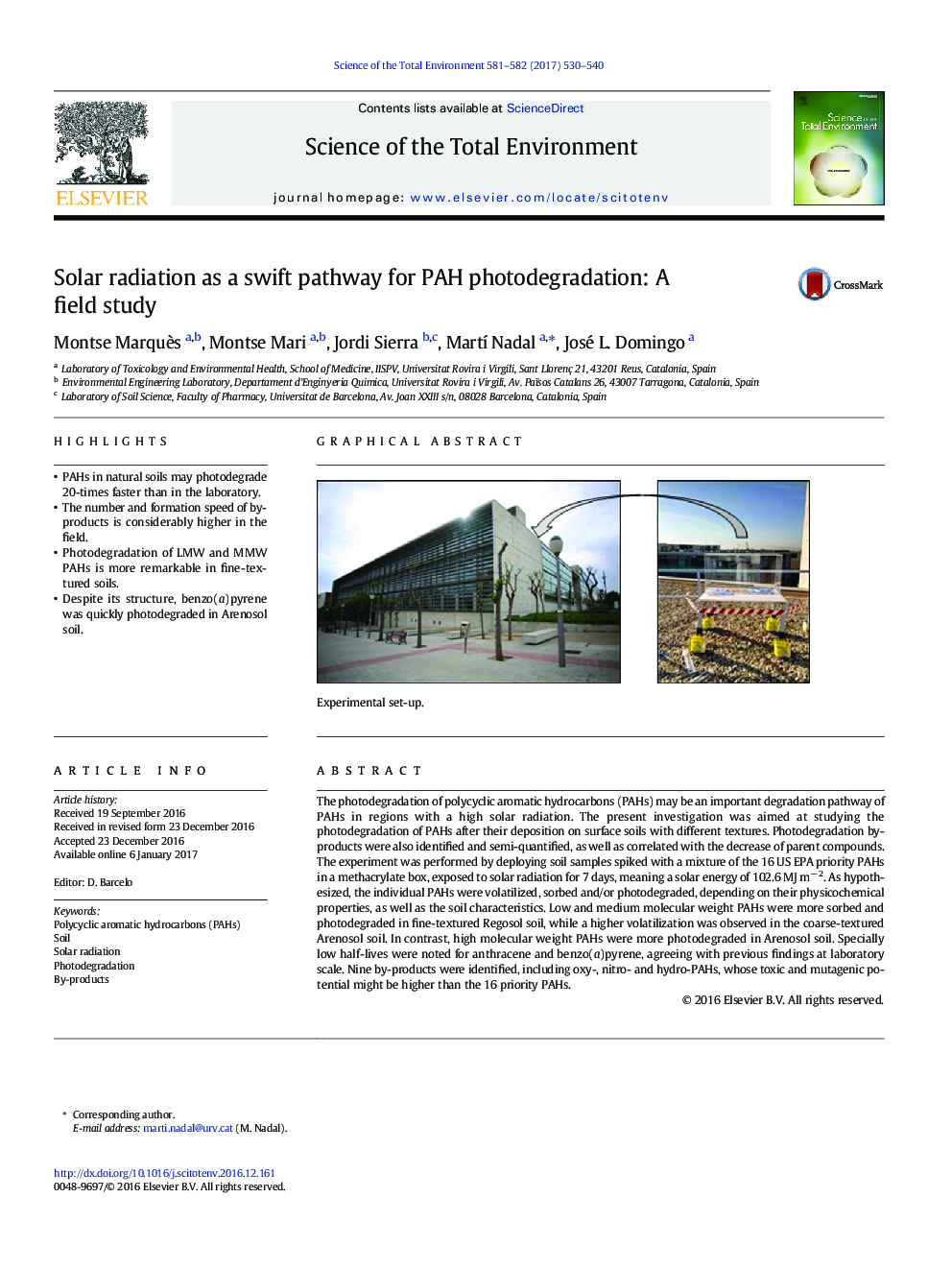| Article ID | Journal | Published Year | Pages | File Type |
|---|---|---|---|---|
| 5751797 | Science of The Total Environment | 2017 | 11 Pages |
â¢PAHs in natural soils may photodegrade 20-times faster than in the laboratory.â¢The number and formation speed of by-products is considerably higher in the field.â¢Photodegradation of LMW and MMW PAHs is more remarkable in fine-textured soils.â¢Despite its structure, benzo(a)pyrene was quickly photodegraded in Arenosol soil.
The photodegradation of polycyclic aromatic hydrocarbons (PAHs) may be an important degradation pathway of PAHs in regions with a high solar radiation. The present investigation was aimed at studying the photodegradation of PAHs after their deposition on surface soils with different textures. Photodegradation by-products were also identified and semi-quantified, as well as correlated with the decrease of parent compounds. The experiment was performed by deploying soil samples spiked with a mixture of the 16 US EPA priority PAHs in a methacrylate box, exposed to solar radiation for 7 days, meaning a solar energy of 102.6 MJ mâ 2. As hypothesized, the individual PAHs were volatilized, sorbed and/or photodegraded, depending on their physicochemical properties, as well as the soil characteristics. Low and medium molecular weight PAHs were more sorbed and photodegraded in fine-textured Regosol soil, while a higher volatilization was observed in the coarse-textured Arenosol soil. In contrast, high molecular weight PAHs were more photodegraded in Arenosol soil. Specially low half-lives were noted for anthracene and benzo(a)pyrene, agreeing with previous findings at laboratory scale. Nine by-products were identified, including oxy-, nitro- and hydro-PAHs, whose toxic and mutagenic potential might be higher than the 16 priority PAHs.
Graphical abstractExperimental set-up.Download high-res image (144KB)Download full-size image
